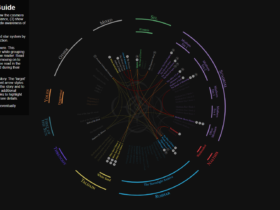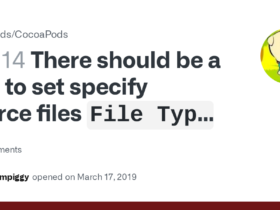Have you ever come across the term “WYF” in a text or chat and wondered what it means? Don’t worry—you’re not alone. Slang terms like WYF can sometimes be confusing, especially if you’re new to texting or online conversations. In this article, we’ll break down everything you need to know about WYF, from its meaning to how and where it’s used. By the end, you’ll feel confident enough to use WYF in your own chats or simply understand it when someone else uses it.
What Does WYF Mean in Text?
WYF is an acronym that stands for “What’s Your Favorite?” However, depending on the context, it can also mean “Where You From?” The meaning of WYF changes based on the conversation, so it’s important to pay attention to the situation in which it’s used. For example, if someone says “WYF movie?” they’re asking, “What’s your favorite movie?” Alternatively, if you’re talking to someone new and they say “WYF?” without any additional context, they might be asking, “Where are you from?”
In texting culture, acronyms like WYF are popular because they save time and make communication faster. Instead of typing out a full sentence, you can use just three letters to get your point across. WYF is widely used across social media, messaging apps, and even casual email conversations.
When Do People Use WYF?
People use WYF in casual conversations when they want to ask about someone’s preferences or background. Since WYF can mean either “What’s your favorite?” or “Where you from?” the meaning depends entirely on the context of the conversation.
For example:
- If you’re discussing hobbies or interests, WYF will most likely mean “What’s your favorite?”
- If you’re chatting with someone for the first time, they might use WYF to ask “Where are you from?”
WYF is most commonly used in informal conversations among friends, family, or even acquaintances. It’s not typically used in formal settings, so you’re unlikely to see it in a work-related email or professional environment.
Examples of WYF in Conversations
Here are a few examples to help you better understand how WYF is used in real-life conversations:

- Asking about Preferences:
- Person A: “WYF color?”
- Person B: “Blue. What about you?”
- In this case, Person A is asking about someone’s favorite color.
- Asking About Someone’s Location:
- Person A: “Hey! WYF?”
- Person B: “I’m from Chicago. You?”
- Here, WYF stands for “Where you from?”
- Talking About Entertainment:
- Person A: “WYF Netflix show right now?”
- Person B: “Stranger Things! It’s so good!”
In each example, the meaning of WYF changes slightly based on the surrounding text or conversation topic.
Why Should You Know WYF?
Understanding the meaning of WYF is essential if you regularly communicate with friends or family members via text. Since slang terms like WYF are widely used in digital conversations, knowing their meanings can help you avoid confusion and respond appropriately.
Additionally, being familiar with modern acronyms can make you appear more approachable and in tune with current trends. This is especially important if you’re trying to connect with younger people who frequently use slang in their everyday conversations.
How to Reply When Someone Says WYF?
How you respond to WYF depends on its meaning in the specific context. Here’s a simple guide to help you reply:
- If WYF means “What’s your favorite?”
- Answer with your favorite thing related to the topic. For example:
- “WYF food?”
- Reply: “Pizza! What about you?”
- Answer with your favorite thing related to the topic. For example:
- If WYF means “Where you from?”
- Share your location, if you’re comfortable doing so. For example:
- “WYF?”
- Reply: “I’m from California. You?”
- Share your location, if you’re comfortable doing so. For example:
By paying attention to the context, you can easily figure out how to reply to WYF without any confusion.
Is WYF Slang Only for Teens?
While slang like WYF is popular among teenagers, it’s not limited to them. People of all ages use acronyms in text messages because they’re convenient and save time. However, teens and young adults are more likely to use WYF and similar terms regularly, as they tend to be more active on social media platforms where slang is common.
That being said, adults who stay active in online spaces or text frequently may also encounter WYF. It’s a versatile term that can be used by anyone, regardless of age, as long as the context makes sense.
Common Places Where You’ll See WYF
WYF can appear in various online and offline spaces. Here are some of the most common places where you’ll encounter it:
- Text Messages:
- Friends or family members may use WYF when chatting casually.
- Social Media:
- Platforms like Instagram, Snapchat, and Twitter are hotspots for slang terms like WYF.
- Online Forums:
- In community discussions or group chats, people may use WYF to get to know each other better.
- Dating Apps:
- WYF is often used in dating app conversations to ask someone where they’re from or about their preferences.
Understanding where you might see WYF can help you stay prepared to use or interpret it in the right way.
Why Is WYF So Popular?
The popularity of WYF can be attributed to a few key factors:
- Convenience: Acronyms like WYF are short and easy to type, making them perfect for quick conversations.
- Versatility: WYF can mean different things depending on the context, which makes it useful in various situations.
- Cultural Influence: Slang terms like WYF often become popular because they’re widely used by influencers, celebrities, or social media users.
Because of these factors, WYF has become a staple in modern text communication.
WYF in Different Situations
WYF is a versatile acronym that can be used in many situations. Here are a few examples of how it’s used in different contexts:

- Getting to Know Someone:
- When chatting with someone new, you can use WYF to learn more about their preferences or background.
- Sharing Interests:
- In group chats, WYF is a great way to start a conversation about shared interests, such as movies, music, or food.
- Breaking the Ice:
- WYF can be a fun icebreaker question in both online and in-person conversations.
Fun Ways to Use WYF in Texts
You can get creative with WYF to make your conversations more engaging. For example:
- WYF emoji?
- WYF holiday destination?
- WYF song to listen to when you’re happy?
Using WYF in unique ways can make your texts more interesting and help you connect with others on a deeper level.
Similar Slang Like WYF You Should Know
If you’re interested in WYF, here are some similar slang terms you might want to know:
- WYD: What You Doing?
- HBU: How About You?
- HMU: Hit Me Up
- LOL: Laugh Out Loud
- TTYL: Talk To You Later
These terms are just as popular as WYF and can help you navigate texting culture more easily.
Thoughts on WYF
While WYF might seem like just another texting acronym, it’s actually a great tool for making communication faster and more fun. It allows people to connect and share their preferences or backgrounds without spending too much time typing out full sentences.
At the same time, it’s important to remember that not everyone will understand WYF right away, especially if they’re not familiar with texting slang. When in doubt, provide additional context to ensure your message is clear.
The Bottom Line
WYF is a widely-used acronym that stands for either “What’s Your Favorite?” or “Where You From?” It’s a simple yet versatile term that can be used in many different contexts, from casual conversations to social media interactions. By understanding the meaning and usage of WYF, you can improve your texting skills and stay up-to-date with modern slang.
Whether you’re chatting with friends, meeting someone new, or just having fun with texts, WYF is a great way to spark interesting conversations. So next time you see WYF in a message, you’ll know exactly how to respond—and maybe even use it yourself!














Leave a Reply